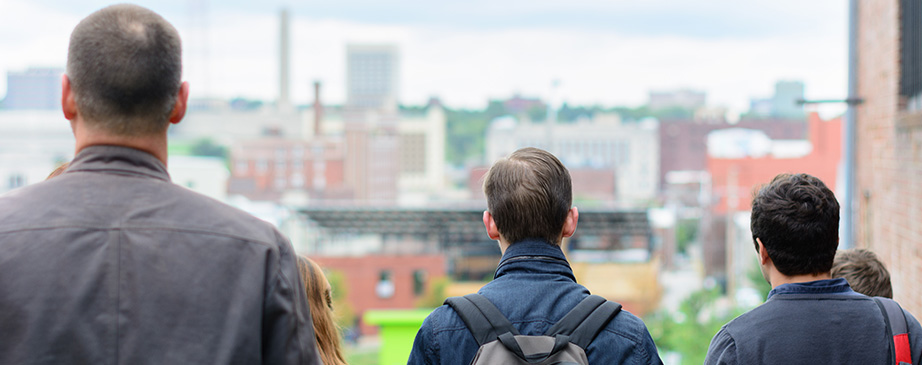
Bridging: Making Downtown Kansas City Stronger by Coming Together
On the first Saturday in December in the year 2000, I was unpacking boxes in our then-new offices in the Power and Light Building when the phone rang. It was John O’Brien, artist and gallery owner, demanding that I stop what I was doing and walk down to his gallery at 19th and Baltimore. I knew John as a neighborhood leader when our firm was asked to develop a plan to guide the transformation of the Union Station Warehouse District into the emerging unique artist and art gallery culture that Jim Leedy led and cultivated. That plan was designed to balance organic evolution with intentionality that maintained the authenticity of the place while creating a sustaining and affordable environment for art and artists. The Saturday conversation with John would prove to be another step in shaping the future of the Crossroads and Kansas City.
A meeting followed on the last “First Friday” art walk of the year. First Friday’s were smaller and more intimate events at the time. Often the focus of conversation during the monthly gallery gatherings among friends was the future of the Crossroads and its role in Kansas City. These friends wanted to understand what it would take to get the Downtown leaders and City Hall to take their community seriously.
That December 2000 First Friday was important. That night John had an epiphany. He realized that for a number of years the community had been waiting for Downtown to reach out to the Crossroads. They could be waiting forever. What if, instead, the Crossroads decided to reach out to The Downtown Council, to City leadership, to businesses and to others?
John and I stood in the middle of Baltimore Avenue enjoying a beer and looking towards Downtown. He decided that the Crossroads would reach out to Downtown.
The Crossroads did reach out to Downtown — and the rest is history. Artists and art became the driving force in the revitalization of Kansas City, fueling the organic growth of the Crossroads. We still have a lot to do. The Crossroads is a vital part of the rebirth economy of our City, and it remains a nurturing ecology for art and community.
While John and his colleagues understood that bridges to Downtown needed to be built, Downtown leaders were feeling the same thing. However, it took initiative from the Crossroads to make that happen. The east-west divide that separates the city’s original arts and culture center with the Crossroads and Downtown needs to be bridged. We have a lot of work to do connect the Jazz and 18th and Vine Districts with the Crossroads and Downtown while completing what we started in all of these, and other, subdistricts of greater downtown.

During the first week of the World Series, The New York Times noted the historic connection between baseball and jazz, with Kansas City being the focus of the story. Our celebration of the Royals victory on Tuesday, November 3 engulfed all of Downtown and connected the urban core with the entire region for the first time ever.
It is time for all of the leaders from all of the subdistricts of greater downtown and the city to come together in order to build on the great things that are happening in all of these areas. Building these bridges to support each other’s successes is vital if we are to continue on the path to become the great American World Series Champion City that we strive to be. We have to be on the same team. It is time to hit the line.
A lesson from 15 years ago, from December 2000, is one of building the bridges needed to create equitable revitalization across all of Downtown. All of Downtown needs good planning, sound public policy, and public and private economic development tools to continue what has been started. I encourage you to walk around the city and see for yourself. There are more sidewalks and streets in need than there are complete and repaired ones. From east to west there are buildings, vacant lots or parking lots that should be transformed into homes or spaces for people to live, work, or play. The suggestions that Downtown or the Crossroads are “finished” are just not accurate.
It is time for the leaders of the historic arts community of jazz to reach out — and to be reached out to — by the leaders and community of the rest of Downtown to make certain that all bridges are being built.


